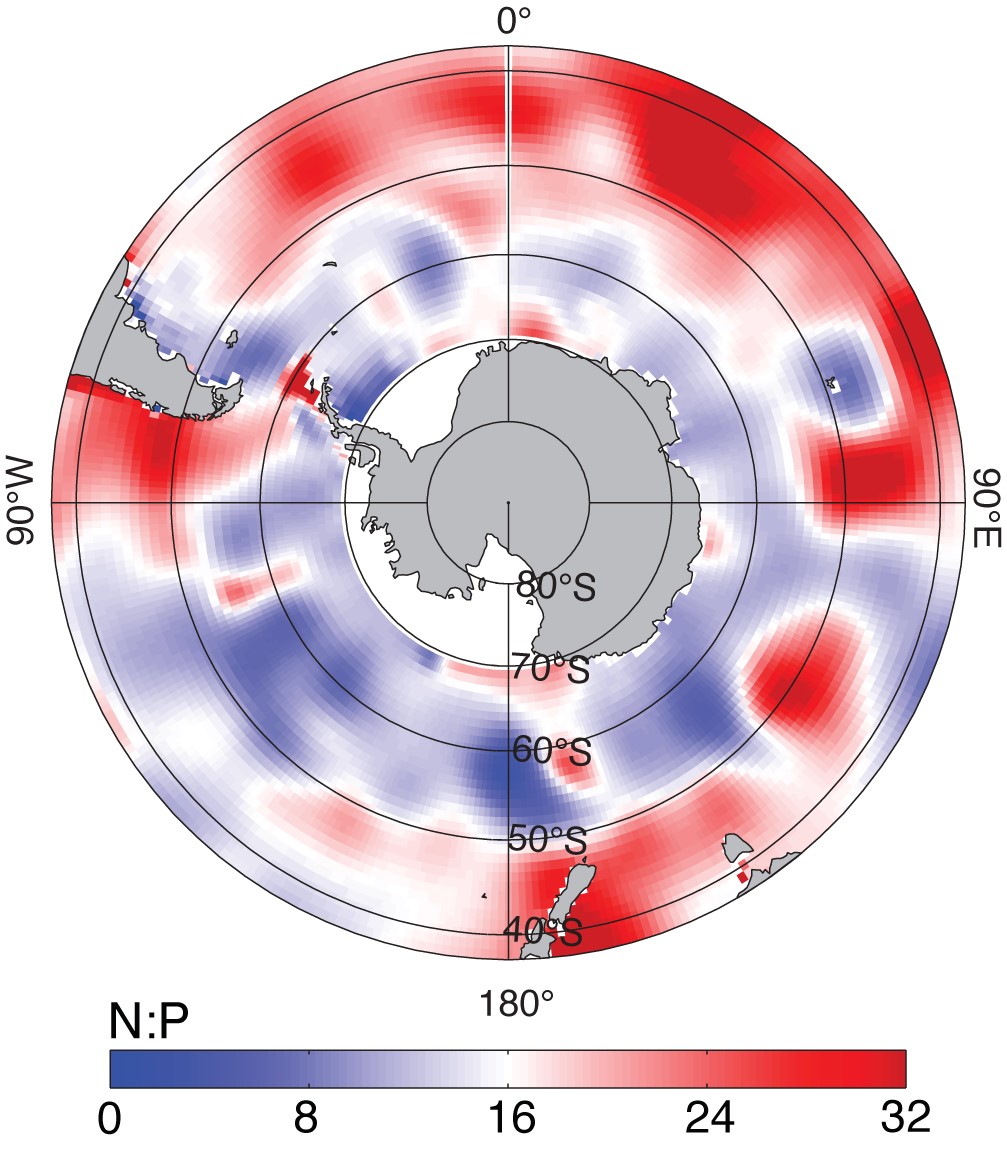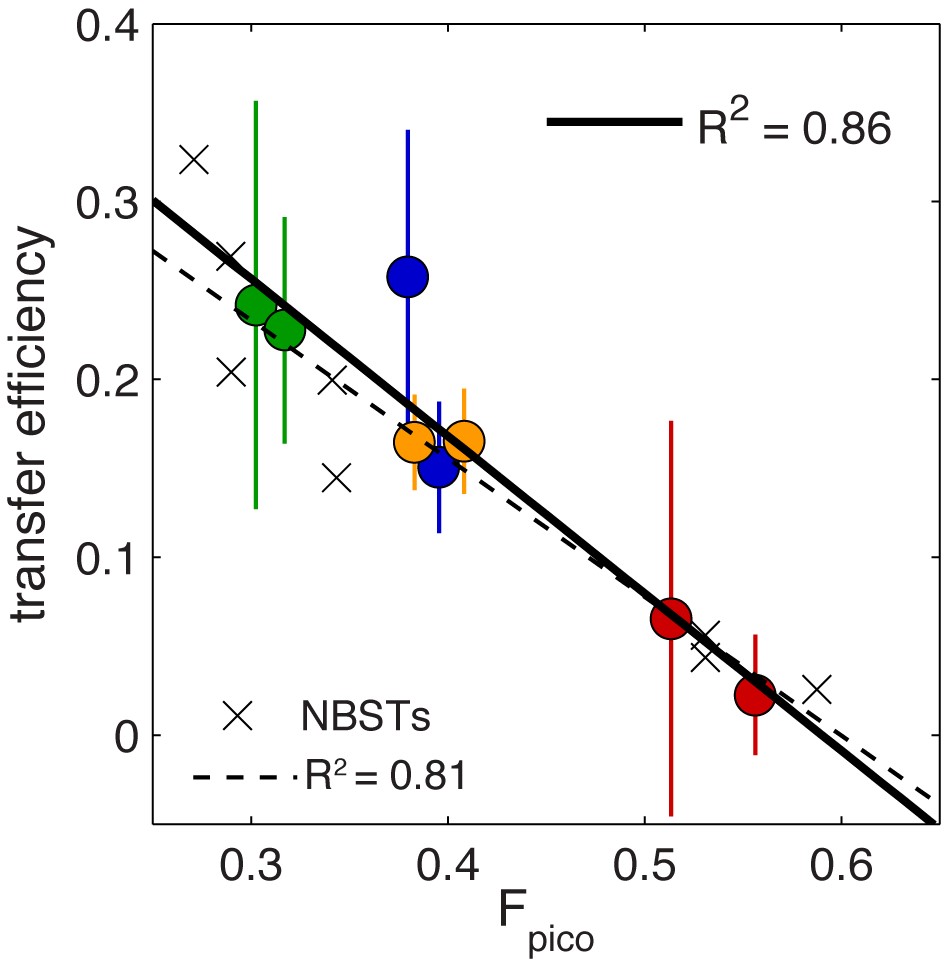Research
Marine Ecosystems
Marine microbes play myriad integral roles in the oceanic carbon cycle – fixing CO2 into organic matter in surface waters, packaging it into sinking particles, and respiring it back to CO2 at depth.
Ecological stoichiometry: The elemental requirements of photosynthetic plankton determine which inorganic nutrient limits their growth and ability to fix CO2. Our work identified biome-scale deviations from the canonical “Redfield Ratio” of 16N:1P in phytoplankton biomass, related to the abundance of diatoms relative to other taxa (Weber & Deutsch 2010, Nature). These stoichiometric variations shape the ecological niche of nitrogen fixing plankton, and thereby modulate the feedbacks between nitrogen sources and sinks in the ocean (Weber & Deutsch 2012, Nature; Deutsch & Weber 2012, ARMS).

N:P ratio of exported organic matter in the Southern Ocean, diagnosed in an ocean circulation model. Figure adapted from Weber & Deutsch, 2010.
Export and remineralization: Our work has elucidated the roles of microbial ecosystem structure and metabolic rates in governing the export and fate of particulate organic carbon: Phytoplankton size structure dictates the size and sinking speed of particles (Weber et al. 2016, PNAS), whereas temperature and oxygen regulate their decomposition rate by heterotrophic bacteria (DeVries & Weber 2017, GBC; Cram et al. 2018, GBC). Together, these factors control the likelihood of particle export from the surface ocean, and their depth of remineralization in the ocean interior.

Relationship between organic particle transfer efficiency to the deep ocean, and the contribution of small picoplankton to organic matter production (Fpico). Colored dots showparticle fluxes reconstructed in an ocean, crosses show data from Neutrally Buoyant Sediment Traps (NBSTs).
